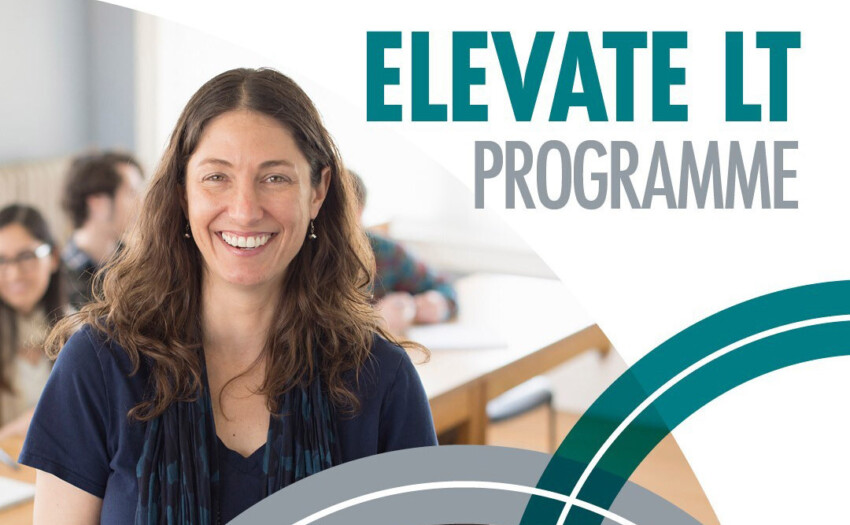Coaching with Unseen Observations
Classroom observations are a problem. They distort classroom dynamics, encourage an artificial performance and, for all that disruption, aren't very productive. Unseen observations are an alternative approach, focussing on deep learning through professional conversations.

What’s An Unseen Observation?
Yes, the title is rather beguiling I admit. So let’s clarify the main concept from the start: an unseen observation really does mean that no external person enters the teacher’s classroom and observes the teaching.
Instead, the teacher prepares their teaching, predicting the intended impact of their selected teaching techniques. Some like to call these predictions, hypotheses. Or in other terminology they are the teacher’s theories of action that reveal the reasoning behind the teaching actions.
Once written, the teacher shares this planning with either a peer, a coach or a manager. During their conversation, the pair will explore the assumptions behind the reasoning and consider any improvements. The teacher may, or may not, make revisions to the plan based on this conversation, and then goes ahead and executes the plan, unseen by the colleague.
After the teaching, at a time that is convenient to both but pretty soon afterwards, the pair reunite for a post conversation where the teacher reflects on the effectiveness of the lesson and soundness of the reasoning behind the plan. In a spirit of joint exploration, the two examine the possible sources of evidence for making such a judgement and challenge, if necessary, any of the assumptions upon which the plan was based.
The result is that a teacher’s thinking is affected, quite often to a significant degree. American CPD expert, Charlotte Danielson, reports that the learning from this type of joint enquiry far surpasses feedback given by a manager that she derides as mere telling.

In his book Classroom Observation, Matt O’Leary reports on his research on the assumptions behind observations and evidence of their ineffectiveness. He offers several alternatives to the traditional evaluative observation. Unseen observations is one such option and is where I first learned of this approach.
Hayley and Sean’s Coaching Unseen Observation
Hayley Shaw, in her first year of teaching, works at St Peters primary school in Waterlooville in Hampshire. Her coach, Sean Austin, is in his fourth year. Both being busy, liked the time-efficiency of this approach. And having had a year of observations, Hayley was keen to explore the collegiate problem-solving this seemed to offer.
They found the whole process easy, convenient (they met before and after school on the same day) and productive. They let me know by email of their trial and I met up with them the following week to find out more.
I was keen to capture what exactly they had done. I knew napkin sketching is unrivalled in getting people to focus on the important things and to capture them in the right sequence, so I taught them how to do this. Below, you’ll find a brief explanation of napkin sketching and below that, their own napkin sketch of the process they followed.

What’s A Napkin Sketch?
A napkin sketch is a rough-and-ready visual depiction of a process, concept or structure. The napkin part of the title refers to its provisional nature, while the sketching part has nothing to do with art and everything to do with thinking.
It’s a quick method of pinpointing your thoughts, summarising the main points as a sort of visual précis. Some people think of it as cognitive prosthetic where instead of working everything out in the privacy of your head, you externalise your developing thoughts, inviting collaborative thinking with colleagues. Below is an example by Don Moyer, a communications expert.

1: Planning
I invited Hayley to frame her planning in the structure of a theory of action. Explaining your planning in this way, clarifies your reasoning which makes the coaching so much more profound and incisive. While it may sound rather complicated, it’s a really simple structure, as you’ll see as Hayley’s describes it.
“If I want the children to write an introduction to an information text, then they need to know its features, see models and be inspired. And then, I will need to explain, model and interact.”

2: Pre-Unseen Observation Conversation
Before school, Hayley talked through her plans, making sure she explained her thinking to Sean. He listened, asked questions to clarify and then made a suggestion. He introduced Hayley to the HOW2 Clarifying Learning Objectives as being a highly appropriate support for her plans. After looking through the HOW2, Hayley agreed and included it in her amended plans.
“I talked through my plan and explained my thinking to Sean.” Hayley reported.

3: Teaching
Hayley went ahead with executing her plan. There was no observer.

4: Post-Unseen Observation Conversation
When the two met up again at the end of the school day, Hayley reflected on her lesson. She examined both her plan to check if its assumptions and reasoning were sound. And she also examined its execution. By looking from these two perspectives, she was able to distinguish the two and identify where any improvements could be made. During this process, Sean first listened and then gently asked questions to support Hayley’s insights.
“On reflection, my thinking was suitable. However, I felt the execution could be fine-tuned regarding pace (slower) at some places. Sean suggested that I could use more time and less pace to talk through my thinking during modelling.”

Hayley and Sean’s full napkin sketch
Here is the napkin sketch Hayley and Sean both constructed as a capture of their trial of an unseen observation within a coaching context. You may notice the visual cue they invented to signify:
• suggestion and acceptance in the Pre-Conversation section (an plus, and a tick)
• the backwards facing arrow in the Post-Conversation to signify reflection. And the steps next to a forward-facing arrow to signify next steps for action.







